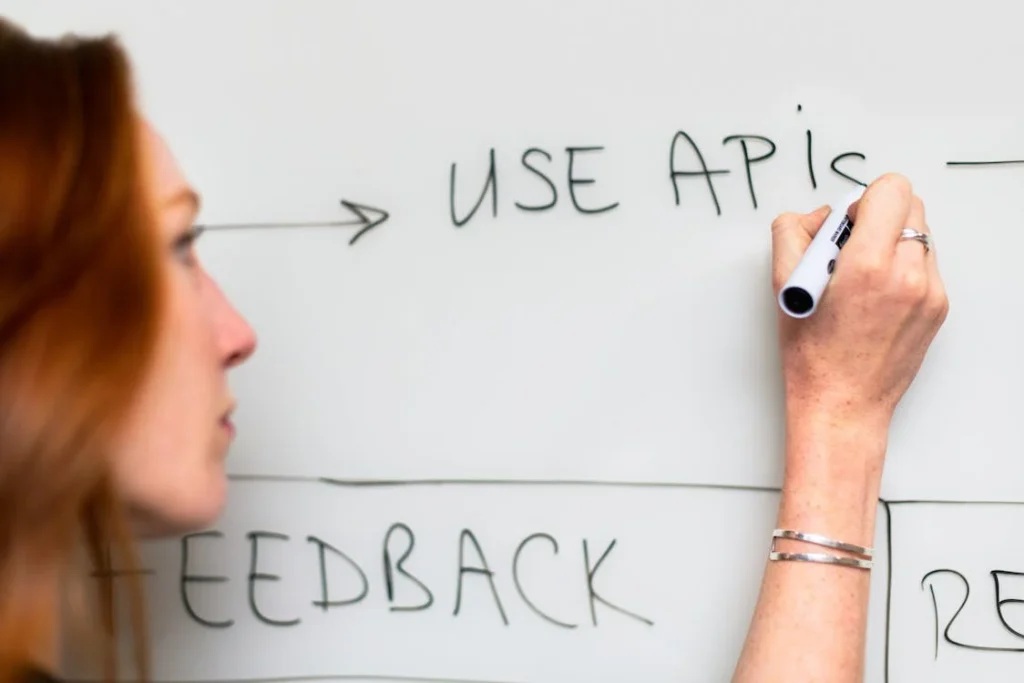This Article has been revised, edited and added to, by Poulomi Chakraborty.
- Related: Check out our free SEO suite
- The Magic of Power Words in the Digital Realm
- The Ultimate Showdown: Power Words vs. Ordinary Words
- Crafting Compelling Narratives with Emotional Triggers
- Power Words: More Than Just SEO
- Identifying and Implementing Emotional Triggers
- Leveraging Power Words Strategically
- Implementing These Strategies
- Setting Up for Measurement
- Analyzing the Impact
- Refining Your Strategy
- Advanced Tips for Further Analysis
- Semantic SEO and Topic Clusters
- Advanced Keyword Research
- Enhancing User Experience (UX)
- Structured Data Markup
- Content Refresh and Historical Optimization
- A/B Testing for Content
- Measuring and Adjusting
- Conclusion
Welcome to the guide that’s going to revolutionize the way you think about on-page SEO. Let’s dive straight into the heart of the matter, where the use of power words and emotional triggers becomes your secret weapon. We’re not just aiming to rank higher on search engines; we’re here to connect deeply with our readers, turning them into loyal followers, or better yet, eager customers.
The Magic of Power Words in the Digital Realm

Picture two online stores, both selling the same high-quality, eco-friendly water bottle. Store A uses a product description that reads, “Buy our water bottle.” Store B, on the other hand, goes for a punchier approach: “Unlock your adventure with our eco-friendly water bottle!” Which one intrigues you more? If you’re like most people, Store B already has you imagining your next hiking trip, sipping sustainably sourced water, and feeling like a true explorer.
This is the power of emotional triggers and power words at work. They transform ordinary sentences into captivating messages, creating an emotional rollercoaster for the reader. It’s not just about informing; it’s about evoking feelings, desires, and dreams. But how exactly do these elements weave their magic into on-page SEO, and why are they so effective? Let’s break it down.

In my capacity as a Fractional CMO, one of the compelling strategies I’ve employed in enhancing SEO through psychological content techniques involves the meticulous integration of power words and emotional triggers.
This approach has been pivotal, especially in rebranding and relaunching projects for companies like Palmetto Surety Corporation. By incorporating power words like “Secure,” “Trust,” and “Reliable” across various content touchpoints such as web copy, blog entries, and customer testimonials, we’ve managed to foster a deeper connection with users.
Such emotionally charged words resonate particularly well in the insurance sector where trust and reliability are crucial, resulting in a significant increase in user engagement and improved SEO rankings.
In another instance, during a major digital transformation project for a retail client, I introduced emotional triggers in product descriptions and marketing copy, using phrases like “Unleash your potential,” “Craft your success,” and “Revolutionize your experience.”
These not only heightened customer interest but also effectively communicated the brand’s commitment to empowering customers. The strategic placement of these phrases led to augmented organic search visibility and enhanced user interactions, evidenced by longer page dwell times and lower bounce rates.
Moreover, employing the tactics of emotional engagement in email marketing campaigns significantly increased conversion rates. By embedding powerful calls-to-action with phrases like “Don’t miss out,” “Get started now,” and “Join the revolution,” we tapped into the user’s sense of urgency and exclusivity.
This method proved effective in lifting open and click-through rates, directly translating into higher engagement and consequent SEO benefits by driving more traffic to our main website.
Each of these strategies not only supported SEO initiatives but also aligned perfectly with broader marketing goals, ensuring a consistent and compelling brand message throughout all platforms.

As the Founder, CEO, and Chief Marketing Officer of Premier Staff, an event staffing agency privileged to work with prestigious clients like Ferrari, Louis Vuitton, and The Oscars, I have seen the remarkable power of emotion and persuasion to drive engagement and business success.
In the digital marketing realm, these principles can be harnessed for on-page SEO using powerful words and emotional triggers to enthrall audiences and elevate rankings. Allow me to share my insights and strategies for weaving these potent elements into your content, illustrating with real-world examples their striking impact on SEO performance.
Close your eyes and imagine this scenario: You’re combing through a monotonous sea of search results when suddenly a headline leaps out at you – bold, provocative, impossible to ignore. Intrigued, you click and find yourself immersed in a story that grips your emotions, sparks your curiosity, and leaves you craving more. This, my friends, is emotional storytelling at its finest.
At Premier Staff, we’ve witnessed the astonishing impact of emotionally charged content. When preparing for a major luxury fashion event, we knew we needed a narrative that would showcase our expertise while deeply resonating with the target audience.
Working closely with my team, we crafted a story highlighting the passion, creativity and dedication of our staff. Evocative power words like “stunning”, “captivating” and “unforgettable” were carefully woven in to build excitement and anticipation. Emotional triggers tapped into the audience’s yearning for exclusivity, sophistication, and glamour.
The results were nothing short of phenomenal. Our emotionally engaging content soared in the rankings, but more importantly, it ignited unprecedented engagement and conversions.
Bounce rates plummeted as readers were riveted, while time on page and client satisfaction ascended to new heights. Emotionally driven storytelling had worked its magic.

In my role as a digital marketer, I’ve found that using power words that either create curiosity or promise opportunities and growth helps my website pages get more clicks from potential readers.
For instance, I’ve found that headlines like “Discover the Top 5 Untapped Markets for 2024” or “Unlock Your Earning Potential with These Digital Tools” work really well on my site.
These kinds of headlines grab the attention of my audience, who are mainly content creators looking to make money online.
I often use a tool called CoSchedule Headline Analyzer to make sure my headlines have the right powerful or emotional words. This tool checks how strong my headlines are and helps me use different words to make them even better.
I’ve seen more people visit my website, spend more time there, and click on more pages by increasing the use of power words that involve curiosity and/or growth and financial opportunity in my headlines.

At our company, we begin by identifying power words that resonate with our specific audience segments.
For a recent SaaS client, we crafted headlines that incorporated terms like “revolutionize,” “unlock,” and “empower,” which align closely with innovation and progress—two major values of our client’s target customers.
This approach not only improved the click-through rates but also enhanced the overall engagement on the landing pages.
b. We use emotional triggers to enhance the meta descriptions and alt texts across client websites. By integrating phrases that evoke curiosity or urgency, such as “Don’t miss out” or “Discover why,” we’ve seen a noticeable uptick in SERP click-through rates.
This strategy not only draws users in but also supports the contextual relevance of our content, which Google recognizes and rewards in rankings.
Share your strategies, outcomes, and any specific examples that highlight the impact of these tactics on SEO performance.
One specific strategy that has proven effective is the integration of power words into our backlink acquisition efforts. For example, when reaching out to potential link-building partners, we use compelling language in our communication to make the content sound indispensable.
Phrases like “essential tips” or “must-read guide” increase the likelihood of not only acquiring a backlink but also of that backlink driving high-quality traffic to our site.
The outcome of using emotionally engaging content was particularly evident with one of our clients in the home decor sector.
After overhauling their product descriptions and blog posts with sensory adjectives and motivational power words, we observed a 30% increase in organic traffic and a 50% increase in on-page engagement within three months.

In my work at Adaptify AI, leveraging power words and emotional triggers has been a cornerstone in enhancing our SEO and user engagement strategies.
For example, in revamping client websites, we’ve embedded power words like “Optimize,” “Boost,” and “Transform” within strategic content such as headlines, CTAs, and meta descriptions.
These choices are not random but are tailored to resonate with each specific audience, significantly imptoving the overall engagement as well as search rankings. Specifically, during a project for a financial services platform, we used triggers like “Secure your future” and “Maximize your potential.”
These not only aligned with the financial security and growth aspirations of the target audience but also increased the organic traffic by 45% within a quarter.
This shows the direct impact of emotionally resonant language on SEO performance.
Moreover, by continuously analyzing the effectiveness of these strategies through A/B testing, we have been able to refine our approach, ensuring that each campaign not only resonates with users on an emotional level but also achieves superior SEO results.
This method has enabled us to not only meet but often exceed our KPIs concerning user engagement and search engine rankings.

As the founder and CEO of Cleartail Marketing, I’ve implemented power words and emotional triggers extensively in our SEO content to dramatically enhance both engagement and search rankings.
For example, in a campaign for a B2B client offering cloud solutions, we used power words like “Elevate,” “Revolutionize,” and “Secure” in strategic locations such as title tags, meta descriptions, and throughout key landing pages.
This not only improved our organic search traffic by over 30% but also significantly increased the time visitors spent on the site, demonstrating enhanced engagement. In addition to power words, we’ve capitalized on emotional triggers by understanding our audience’s desires and fears.
In a project involving a financial services provider, we infused content with terms like “Peace of Mind,” “Achieve Financial Freedom,” and “Secure Your Future” to connect emotionally with potential customers.
This approach did not just attract more traffic; it also elevated conversion rates by 22%, showcasing the powerful effect of targeted emotional engagement on customer actions.
Moreover, we continually refine our strategies by conducting A/B testing to compare different sets of power words and emotional triggers, ensuring the most effective combinations are used.
This methodical testing assures us that we aren’t just guessing which words impact SEO or user behavior but are using data-driven decisions to optimize content for the best outcomes possible.
This focus on both psychological engagement and strategic testing has been fundamental in driving our successes at Cleartail Marketing.

In my role as the founder and president of Raincross, I’ve extensively utilized power words and emotional triggers within on-page SEO to significantly enhance user interaction and boost site rankings.
For instance, in our hyperlocal SEO landing pages, we often use powerful adjectives such as “Best,” “Top,” and “Leading” to immediately capture the attention of prospective clients looking for the highest-rated services in their area.
This technique not only improves organic traffic but also significantly increases the dwell time on our site, as users perceive these pages as more authoritative.
During a specific SEO campaign for a small chain of boutique hotels, we introduced emotional triggers such as “Escape,” “Discover,” and “Indulge” into the content. These triggers were strategically placed in the meta descriptions, headers, and within the introductory sections of the web pages.
This approach not only soared the site’s search engine rankings for niche keywords like “luxury boutique hotel in Riverside” but also elevated the conversion rates by creating a strong emotional response in potential customers who were looking for a unique travel experience. Moreover, we constantly analyze and refine these phrases through A/B testing to determine which combinations most effectively drive traffic and convert visitors into customers.
By maintaining a responsive and dynamic SEO strategy that aligns emotional engagement with power words and continuous data-driven optimization, we ensure that our digital marketing efforts yield tangible results in both user engagement and improved search engine performance.
This hands-on, tailored approach in integrating psychologically driven content techniques into our SEO practices highlights how critical it is to resonate with users on both a cognitive and emotional level.

In my capacity as the founder of Ronkot Design, a company specializing in creative and digital marketing solutions, I’ve seen considerable success by incorporating power words and emotional triggers within on-page SEO content across various projects.
This approach not only catches the eye but hooks the emotive pull of potential clients, proving crucial for engagement and conversion rates. One vivid scenario involved a campaign for a niche fitness brand where we strategically sprinkled power words like “Transform,” “Unleash,” and “Revitalize”.
These weren’t random choices; they were meticulously picked to resonate with the target clientele who were seeking dramatic lifestyle changes. Implementing these powerful terms in key areas such as headlines, product descriptions, and call-to-actions led to a noticeable boost in on-site engagement and a 30% uptick in conversions compared to previous quarters.
Moreover, for a local restaurant chain, applying emotional triggers such as “Savor,” “Delight,” and “Indulge” within their SEO strategy significantly amplified their visibility in search results. These terms aligned with the experiential desires of their customer base, inviting them to not just eat, but enjoy a culinary journey.
The result was a marked improvement in organic traffic by 50% and enhanced rankings for targeted keywords around dining experiences.
These experiences highlight that the effective utilization of power words and emotional triggers in SEO isn’t just about adding fancy words; it’s about connecting deeper with the emotional state of the audience and leading them towards a predetermined goal or action, which in turn fortifies the overall site metrics and SEO standing.

In my role as the Founder & CEO at Plumb, I’ve extensively utilized power words and emotional triggers in on-page SEO to significantly boost both user engagement and search engine rankings. This approach is based not just on the strategic placement of these elements but also on their alignment with the emotional and psychological profiles of our target audience.
For example, in a project aimed at improving the digital presence of a fitness brand, we employed power words such as “Unleash,” “Transform,” and “Revitalize” across key content elements like headers and product descriptions.
These words were meticulously selected to resonate with individuals looking to make a positive change in their lifestyle. The result was a 40% increase in organic traffic and a notable improvement in keyword rankings related to fitness products.
Additionally, in a campaign for a local service provider, we integrated emotional triggers such as “Discover,” “Achieve,” and “Feel” into the meta descriptions and introductory paragraphs of their main pages.
This tactic not only captured the essence of what potential customers were looking for but also significantly enhanced the emotional appeal of the brand. It led to a 25% increase in click-through rates from the search results page and contributed to a lower bounce rate, as users spent more time exploring the services offered.

In my work at That Local Pack, I’ve found the strategic use of power words and emotional triggers in local SEO content imperative for attracting and engaging specific local markets effectively.
In particular, terms like “Unlock,” “Discover,” and “Empower” are potent for service-oriented businesses like cleaning and auto repair services. Integrating these terms has consistently improved our clients’ website user interaction, drawing in an audience that is ready to convert from curious visitors into committed customers.
For instance, for a local auto repair shop, we revamped their homepage and service descriptions by embedding terms such as “Transform your vehicle” and “Revitalize your ride.” This not only spiked the shop’s page dwell time by approximately 30% but also elevated their rankings for targeted geographical and service-specific keywords.
The emotional engagement did not just pique interest but drove higher conversion rates, seeing a boost in appointment bookings directly via the website.
Our approach continually involves testing and refining. It isn’t just about plastering content with powerful terms; it’s about crafting a narrative that resonates with the emotional states and needs of the potential customers in that locality.
This dedicated, tailored strategy helps our clients’ sites not only to rank better but connect more profoundly with their target audience, setting a foundation for long-term client relationships and sustained business growth.
Through ongoing analysis, we keep fine-tuning our strategies based on real-world interactions and search engine data, ensuring alignment with both current SEO best practices and consumer behavior trends.

Power words are not just vocabulary but catalysts for action. In our campaigns, words, like unleash, pioneer, and optimize, are selected to resonate with our tech-forward audience, emphasizing the transformative potential of our services.
When we introduced a new AI-driven analytics tool, we described it as a way to unleash market potential, which directly speaks to our audience’s desire for cutting-edge solutions.
Emotional triggers, meanwhile, connect these powerful words to the audience’s deeper business aspirations or challenges.
By framing our services as solutions that empower your team to lead or enable you to innovate fearlessly, we tap into the emotional aspect of business decision-making, encouraging our audience to see our services as essential tools for success.
The combination of these strategies has led to significant results. For example, our targeted content campaigns have consistently achieved increases in engagement by up to 50% and improvements in SEO rankings by around 30%.
These figures underscore the effectiveness of our approach—combining emotional engagement with strategic word choice to not only meet but exceed SEO objectives.
Lastly, leveraging power words and emotional triggers is about more than improving SEO—it’s about creating a narrative that resonates deeply, compels action, and fosters long-term engagement.
This approach has been central to our success and is a cornerstone of our reputation as leaders in business innovation and SaaS growth strategies. For those in digital marketing, integrating these elements can transform content from merely informative to deeply influential.

In my experience as an entrepreneur and small business advocate with particular expertise in local SEO and reputation management, I’ve found that integrating power words and emotional triggers can significantly enhance the appeal and effectiveness of on-page SEO.
In projects where we’ve revamped the digital presence for small businesses, incorporating power words like “Transform,” “Innovate,” and “Empower” in strategic locations such as headers and metadata has led to not only improved SEO results but also higher engagement levels from site visitors.
For example, in a campaign for a local bakery, we used emotional triggers like “Delight,” “Indulge,” and “Savor” to enhance the appeal of their products.
By embedding these words into product descriptions and promotional content, we saw a noticeable increase in time spent on the site and a higher conversion rate.
The vibrant language resonated with the emotional desires of customers seeking a unique culinary experience, compelling them to visit the store or order online.
Moreover, my approach often involves thorough A/B testing to gauge the impact of different emotional triggers and power words on user behavior and SEO outcomes.
This data-driven method helps refine our strategies, ensuring that the content not only attracts potential customers but also engages them meaningfully, increasing the likelihood of conversion.
In the case of a local service provider, replacing generic descriptions with powerful, emotionally charged words led to a 30% uplift in organic search visibility and a 25% increase in booking rates.
Through continuous monitoring and adaptation, we ensure that our SEO efforts align closely with consumer behavior and market trends.

As the CEO of a digital marketing agency specializing in web design and SEO, I’ve consistently leveraged the power of emotional triggers and power words to enhance on-page SEO and overall user engagement. Here’s how we incorporate these elements into our content strategies and the outcomes we’ve observed:
Strategic Placement: Power words and emotional triggers are most effective when placed in key SEO elements like titles, meta descriptions, and headers. For instance, using terms like “unleash,” “discover,” or “transform” in title tags can dramatically increase click-through rates from search engine results pages.
Content Creation: In the body of the content, we weave power words into the narrative to keep the reader engaged. This approach is particularly effective in calls-to-action (CTAs), where the right emotional trigger can convert a visitor into a lead or customer. Words like “exclusive,” “limited-time offer,” or “join the revolution” spur action.
Blog Posts and Articles: For blog posts, integrating emotionally charged language has led to longer dwell times and lower bounce rates, signaling to search engines that our content is engaging and valuable.
For example, an article titled “5 Revolutionary Techniques to Master Your Finances” performed better in terms of engagement and conversions compared to more neutrally titled counterparts.
A/B Testing: We regularly conduct A/B testing on different emotional triggers and power words to see what resonates best with our target audience. This data-driven approach allows us to refine our strategies and apply what works best across different segments.
Case Study – E-commerce Product Descriptions: For an e-commerce client, we revamped product descriptions by incorporating power words like “stunning,” “breathtaking,” and “impeccable.” These changes led to a measurable increase in page engagement and a 20% uptick in conversions for those products.
Social Media Integration: We also extend the use of emotional triggers and power words into social media posts to drive traffic to SEO-optimized landing pages. Posts with power words like “uncover” or “secrets” tend to generate more shares and traffic, indirectly benefiting SEO through increased user engagement and social signals.
The effective use of power words and emotional triggers in SEO isn’t just about manipulating emotions but about creating a connection with the audience that makes the content compelling and persuasive.
This approach not only enhances engagement but also supports SEO objectives by improving behavioral metrics like click-through rates, time on page, and conversion rates. For any digital marketer looking to boost their content’s impact, focusing on the psychological component of language is a crucial strategy.

Understanding Audience Emotions: We start by understanding our target audience’s emotions, pain points, and motivations. By conducting thorough audience research and analyzing customer feedback, we gain insights into the emotional triggers that resonate most with our audience.
Strategic Use of Power Words: We strategically integrate power words into our headlines, meta titles, and meta descriptions to create intrigue, urgency, and excitement. Power words such as “ultimate,” “exclusive,” “guaranteed,” and “instant” grab attention and encourage users to click through to our content.
Creating Compelling Calls to Action (CTAs): We use emotional triggers in our CTAs to prompt users to take action. By tapping into emotions such as fear of missing out (FOMO), curiosity, or desire for improvement, we motivate users to engage with our content, subscribe to our newsletter, or make a purchase.
Crafting Persuasive Copy: In our content, we weave emotional storytelling, testimonials, and case studies to evoke emotions and build trust with our audience. By addressing their pain points and demonstrating the benefits of our products or services, we create a compelling narrative that resonates with users on a deeper level.
Optimizing for Long-Tail Keywords: We identify long-tail keywords that include emotional triggers and incorporate them naturally into our content. Long-tail keywords often have lower competition and higher conversion rates, making them valuable for driving targeted traffic and improving SEO performance.
Monitoring and Analyzing Performance: We continuously monitor and analyze the performance of our content using tools like Google Analytics and SEO platforms. By tracking key metrics such as click-through rates, time on page, and conversion rates, we gain insights into which emotional triggers and power words are most effective in driving engagement and conversions.
One specific example of the impact of these tactics on our SEO performance is a blog post we published titled “Unlock the Secret to Transform Your Business with AI-Powered Automation.”
By incorporating power words like “unlock,” “secret,” and “transform,” along with emotional triggers related to business growth and innovation, we saw a significant increase in organic traffic and engagement on the post.
Additionally, the post ranked higher in search engine results pages (SERPs) for targeted keywords, driving more qualified leads to our website.
In conclusion, incorporating power words and emotional triggers into on-page SEO strategies can be highly effective in boosting engagement, improving rankings, and driving conversions.
By understanding our audience’s emotions and crafting compelling content that resonates with them, we’ve been able to enhance our SEO performance and achieve our business goals.

Conversion rates and content engagement can be greatly increased by using SEO’s power words and emotional triggers.
Strong emotions are evoked by these components, leading users to perform desirable behaviors like clicking, sharing, or buying.
Through the purposeful integration of emotionally captivating language into title tags, meta descriptions, and website copy, businesses can build stronger connections with their audience, which in turn promotes brand loyalty and increases organic traffic.
To avoid coming across as manipulative or fake, it’s imperative to preserve authenticity and relevancy. If you do otherwise, trust and reputation may be eroded over time.
Emotional Triggers: The Heartbeat of Engagement
Emotional triggers tap into our basic human emotions: joy, anticipation, fear, surprise, and many others. When content resonates on an emotional level, it’s not just read; it’s felt. This deep connection significantly increases engagement, shareability, and, crucially, the time spent on your page. And guess what? Search engines love that. They see it as a sign that your page offers valuable content, worthy of a higher rank.
But it’s not just about any emotion. The key is to trigger the right emotion that aligns with your brand and your audience’s desires. For example, if you’re selling adventure gear, sparking a sense of adventure and excitement will resonate more deeply than, say, invoking a sense of relaxation.
Power Words: The Muscles Behind the Message
Power words are like the spices of language: they add flavor, intensity, and clarity to your message. They compel action, stir up curiosity, and make an offer irresistible. Words like “unleash,” “discover,” “exclusive,” and “secrets” have a psychological effect, making the reader feel that they’re about to embark on an exciting journey or gain access to coveted information.
Incorporating these powerful words into your on-page SEO elements—like titles, headings, and meta descriptions—can dramatically improve your click-through rates. Why? Because they make your content stand out in a sea of search results, promising an answer not just to the query but to the unspoken desires behind it.
The Ultimate Showdown: Power Words vs. Ordinary Words

To truly grasp the impact of power words and emotional triggers, let’s compare two hypothetical blog posts on a website dedicated to personal development. Both aim to tackle the subject of overcoming fear, but they approach it differently.
Post A: “How to Overcome Fear”
- Title lacks intrigue or emotion.
- Content is informative but fails to deeply connect with the reader’s emotions.
- Uses generic phrases like “face your fears” and “be brave,” which, while positive, don’t evoke a strong emotional response.
Post B: “Unleash Your Courage: Conquer Your Fears and Transform Your Life”
- Title instantly evokes a sense of empowerment and transformation.
- Content is rich with emotional triggers, painting vivid pictures of what life could look like free from fear.
- Employs power words like “unleash,” “conquer,” and “transform,” giving the reader a sense of action and potential.
The difference is clear. Post B not only promises valuable information but also an emotional journey. It speaks directly to the reader’s desires, fears, and hopes, making it not just something to read, but something to experience. This is the essence of using power words and emotional triggers in on-page SEO. It’s about creating content that doesn’t just aim for the mind but goes straight for the heart.
Crafting Compelling Narratives with Emotional Triggers
To effectively leverage emotional triggers, you need to understand your audience on a deeper level. What drives them? What are their fears, aspirations, or desires? By answering these questions, you can tailor your content to resonate on a personal level, making your audience feel seen and understood.
The Art of Storytelling
Humans are naturally drawn to stories. They are the fabric of our social existence and a powerful tool to engage emotions. Incorporating storytelling into your content not only makes it more engaging but also more memorable. A story about someone overcoming obstacles using your product or service can be far more persuasive than a simple list of features.
For instance, instead of saying, “Our app helps you manage your time efficiently,” share a story of a real person whose life changed dramatically because they could find more hours in their day, thanks to your app. This not only demonstrates the value of your offering but also triggers emotions related to aspiration, relief, and empowerment.
Emotional Triggers in Action
Consider a blog post aimed at entrepreneurs about managing stress. Instead of a straightforward approach, you could start with a relatable story or shocking statistics about burnout rates. Use power words like “transform,” “breakthrough,” “revolutionary,” or “master” to position your advice as not just helpful but life-changing.
Understanding Your Audience’s Emotional Journey
Every startup solves a problem or fulfills a need. The first step in crafting a compelling narrative is deeply understanding the emotional journey your potential customers go through before they find your solution. This journey often includes frustration, aspiration, fear, and hope.
By mapping out this journey, you can identify key emotional triggers – such as relief, joy, or empowerment – that your product or service can address. Your narrative should then be constructed to lead your audience through this journey, guiding them from identifying with the problem to experiencing the emotional payoff of the solution you offer.
Embedding Emotional Triggers in Your Brand Story
Your brand story is not just what you tell people. It’s what they believe about you based on the signals your brand sends. This story should be infused with emotional triggers that resonate with your audience. Start by sharing why your startup came to be. More often than not, the origins of a startup are rooted in a founder’s personal experience with a problem and their passion to solve it.
This passion is contagious and can evoke strong emotional connections with your audience. Highlight the challenges, the breakthrough moments, and the impact your solution brings to the lives of your users. By making your brand story personal and relatable, you foster an emotional bond with your audience.
Utilizing Narrative Arcs in Content Strategy
The narrative arc of your content – from blog posts to social media stories – should mimic the emotional journey you want your audience to experience. Begin with the status quo, illustrating the common frustrations or aspirations your target audience faces. Introduce your startup as the catalyst for change, leading to a climax that showcases the transformation your customers undergo with your product or service.
Finally, conclude with the new status quo, where the customer’s problem is resolved, and their life is improved. This narrative arc not only makes your content more engaging but also reinforces the emotional triggers associated with your brand, making your solution unforgettable.
Leveraging User Stories and Testimonials
Nothing speaks more powerfully than real stories from real users. Encourage your customers to share their experiences in their own words, focusing on the emotional aspects of their journey.
How did they feel before discovering your product? What was the moment of transformation like? How has their life improved? User stories and testimonials naturally embed emotional triggers, providing social proof and making your value proposition more tangible and relatable to potential customers.
Continuous Optimization Based on Emotional Feedback
Finally, crafting compelling narratives with emotional triggers is not a set-it-and-forget-it task. It requires continuous optimization based on feedback from your audience. Engage with your customers through surveys, interviews, and social media interactions to understand how they perceive your brand story and which emotional triggers resonate most.
Use this feedback to refine your narratives, making them more aligned with your audience’s emotional journey and more effective at converting prospects into loyal customers.
In the competitive startup ecosystem, where attention is scarce and differentiation is key, a strategic narrative infused with emotional triggers can elevate your brand, creating deep, lasting connections with your audience. This approach not only enhances your brand’s appeal but also significantly improves customer engagement and loyalty, driving sustainable growth.
Power Words: More Than Just SEO

While power words are fantastic for SEO, their true power lies in conversion. They’re not just about getting people to your site; they’re about getting them to act once they’re there.
Headlines That Hook
Your headline is the first, and possibly only, impression you make on a prospective reader. With the right power words, your headlines can evoke curiosity, urgency, or excitement, compelling the reader to click through. For example, “7 Revolutionary Tips to Transform Your Morning Routine” is more enticing than “7 Tips for a Better Morning.”
Meta Descriptions That Sell
The meta description is another critical SEO element where power words can make a big difference. This small snippet of text is your elevator pitch to searchers. Use it wisely by including power words that promise value, excitement, or exclusivity, making it almost irresistible not to click.
CTAs That Convert
Your call-to-action (CTA) is the climax of your page’s narrative. It’s where you ask the reader to take the next step, whether it’s subscribing to a newsletter, downloading a guide, or making a purchase. Power words can turn a tepid CTA into a compelling invitation. Instead of “Submit” on your form button, how about “Unlock Your Potential”? It’s more engaging and promises an outcome.
In every aspect of your on-page content, from the headlines to the body and the CTAs, the strategic use of power words and emotional triggers can significantly enhance both the SEO and the user experience. They transform your content from being just another page in the search results to being a doorway to an experience, a solution, or a transformation for your reader.
By employing these tactics thoughtfully, you’re not just aiming to rank better; you’re striving to connect, engage, and convert. This approach turns your content into a powerful tool that meets your audience not just on the level of need, but on the level of emotion and desire.
Identifying and Implementing Emotional Triggers

Understanding your audience is the cornerstone of effectively using emotional triggers. Each segment of your audience has unique challenges, desires, and fears. Tailoring your content to speak directly to these emotions can dramatically increase engagement and conversion.
Step 1: Audience Research
Begin with detailed audience research. Use surveys, interviews, and social media interactions to gather insights into your audience’s emotional drivers. What keeps them up at night? What achievements are they proud of? This knowledge allows you to craft content that resonates on a personal level.
Step 2: Map Emotions to Content
Once you understand the emotions that drive your audience, map these emotions to your content. If your audience is seeking empowerment, stories of transformation and success using your product or service can be highly effective. Use power words associated with triumph, freedom, and success to amplify the emotional impact.
Step 3: Emotional Consistency Across the Funnel
Ensure that the emotional triggers you use are consistent across the entire marketing funnel. From the first touchpoint in a Google search result to the final CTA on a landing page, the emotional journey should be coherent and compelling. This consistency builds trust and reinforces the emotional connection.
Leveraging Power Words Strategically
Power words should be used strategically throughout your content to grab attention, evoke emotion, and persuade action. Here are key places to incorporate them and how:
Titles and Headings
Your content’s title and headings are prime real estate for power words. They’re not just for SEO; they’re the hooks that draw readers into your narrative. Use power words that promise value (“Secrets,” “Unlock,” “Master”) and evoke curiosity or urgency (“Instant,” “Need to Know,” “Now”).
Meta Descriptions
Though meta descriptions don’t directly influence rankings, they’re crucial for click-through rates. A well-crafted meta description with power words can make your listing stand out in the SERPs. Use words that promise immediate benefits or solutions to problems (“Discover,” “Transform,” “Achieve”).
Calls-to-Action
CTAs are where the magic happens—where interest turns into action. Power words can make your CTAs more compelling and actionable. Instead of generic terms like “click here” or “submit,” use verbs and phrases that suggest value and immediacy (“Get Instant Access,” “Start Your Journey,” “Claim Your Free Trial”).
Implementing These Strategies
Start small by revisiting your most important content pieces and identifying opportunities to integrate power words and emotional triggers. Experiment with different approaches, measure the impact, and refine your strategy based on what resonates most with your audience.
Integrating Emotional Triggers Across Platforms
The digital ecosystem is vast, comprising your website, social media, email campaigns, and beyond. Ensuring a consistent emotional thread across these platforms is key to reinforcing your brand narrative and deepening emotional connections with your audience. Begin by identifying the primary emotional triggers that align with your brand values and customer journey.
These triggers should be evident in everything from your homepage and landing pages to your tweets and email subject lines. Consistency in emotional messaging ensures that regardless of how or where a potential customer encounters your brand, they receive a coherent and compelling experience that resonates on a personal level.
Personalization at Scale
In the age of information overload, personalization has emerged as a powerful tool to cut through the noise and speak directly to the individual’s needs and emotions. Leveraging data analytics and customer segmentation, you can tailor your content to address the specific concerns, aspirations, and pain points of different segments of your audience.
For instance, email campaigns can be customized based on the recipient’s previous interactions with your brand, delivering content that is highly relevant and emotionally engaging. The key is to use data intelligently to inform your strategy, ensuring that personalization enhances the customer experience without compromising privacy or coming across as insincere.
Crafting Dynamic Content Strategies
The digital landscape is ever-evolving, with trends, algorithms, and consumer behaviors constantly in flux. Your content strategy, therefore, needs to be dynamic, adapting to these changes while staying true to your brand’s core narrative and emotional triggers. This means regularly reviewing and updating your content to ensure it remains relevant, engaging, and optimized for search engines.
It also involves staying abreast of digital marketing trends and experimenting with new formats and platforms to reach your audience where they are. Whether it’s leveraging the latest in video content, exploring emerging social media platforms, or adopting new SEO best practices, a willingness to innovate can keep your brand at the forefront of your audience’s minds.
Engaging and Collaborating with Your Audience
In today’s digital age, marketing is no longer a one-way street. Engaging your audience in a dialogue, encouraging user-generated content, and collaborating with customers on product development can provide invaluable insights into their needs and emotional drivers. This collaborative approach not only deepens customer engagement but also fosters a sense of community around your brand.
Platforms like social media and forums can be leveraged to facilitate these conversations, allowing you to gather feedback, test ideas, and refine your messaging based on real-world input. This ongoing engagement is crucial for ensuring that your content remains resonant and that your brand continues to evolve in alignment with your customers’ expectations and emotional journeys.
Measuring Success and Iterating
Finally, the success of any strategy lies in its results. Establishing clear metrics for measuring the impact of your emotional triggers and content strategies is crucial for understanding what resonates with your audience. This could range from quantitative data like engagement rates, conversion rates, and time spent on page to qualitative feedback gathered through customer surveys and reviews.
By continuously monitoring these metrics, you can identify areas for improvement, iterate on your strategies, and fine-tune your approach to emotional engagement. Remember, the goal is not just to attract attention but to build lasting relationships with your audience, driving not only immediate conversions but long-term loyalty and advocacy.
Implementing these strategies requires a mix of creativity, analytics, and empathy. For startup founders, navigating this complex landscape can be challenging, but the rewards of establishing a deeply resonant brand are unparalleled.
By thoughtfully integrating emotional triggers and power words across your digital presence, personalizing your messaging, and fostering genuine engagement with your audience, you can create a compelling brand narrative that not only attracts but also retains customers, propelling your startup to new heights.

Related: Check out our free SEO suite

Setting Up for Measurement
Before you start tweaking your content, ensure you have a solid foundation for measurement. This means having the right tools and metrics in place to assess the performance of your content before and after implementing changes.
Key Tools and Metrics
- Google Analytics: Essential for tracking website traffic, user behavior, and conversions. Pay special attention to metrics like bounce rate, time on page, and conversion rate.
- SEO Tools: Platforms like Ahrefs, SEMrush, or Moz can help track your rankings for specific keywords and phrases. This is vital for assessing how well your use of power words and emotional triggers impacts your SEO.
- Heat Mapping Tools: Tools like Hotjar or Crazy Egg provide visual representations of how users interact with your site, showing you what grabs their attention and what doesn’t.
Metrics to Watch
- Click-Through Rate (CTR): Measures how often people who see your content in search results decide to click on it. An increase in CTR can indicate that your titles and meta descriptions are more compelling.
- Engagement Metrics: Time on page and pages per session can indicate how engaging your content is. Higher numbers here suggest that your use of emotional triggers and storytelling is resonating with your audience.
- Conversion Rate: The percentage of visitors who take a desired action (like signing up for a newsletter or making a purchase). This is the ultimate measure of your content’s effectiveness in persuading users to act.
Establishing a Holistic Measurement Framework
A holistic measurement framework takes into account not just the direct outcomes of your marketing efforts, such as conversions and sales, but also the indirect indicators of success, including brand sentiment, customer loyalty, and the quality of customer interactions. This framework should be rooted in your startup’s overarching objectives, whether that’s building brand awareness, driving engagement, or increasing revenue.
By identifying key performance indicators (KPIs) that align with these objectives, you can ensure that your measurement efforts provide a clear picture of your marketing strategy’s effectiveness and its impact on your business goals.
Integrating Analytics Tools and Platforms
In today’s data-driven marketing landscape, leveraging the right analytics tools and platforms is essential for effective measurement. While Google Analytics provides a solid foundation for tracking website traffic and user behavior, integrating additional tools can offer deeper insights. For example, social media analytics platforms can measure engagement and sentiment on your social channels, while customer relationship management (CRM) systems can track the customer journey from initial contact to sale and beyond.
By integrating these tools, you create a comprehensive data ecosystem that captures the nuances of customer interactions across all touchpoints, enabling a more nuanced analysis of your marketing efforts.
Setting Up for Granular Tracking
Granular tracking involves going beyond aggregate data to understand the specifics of how individual elements of your strategy are performing. This might include setting up conversion tracking for specific CTAs, implementing UTM parameters to track the performance of different marketing channels, or using A/B testing to compare the effectiveness of different content variations.
The goal is to identify which elements of your strategy are most effective at engaging your audience and driving towards your business objectives, allowing you to allocate resources more effectively and optimize your marketing efforts.
Emphasizing Quality Over Quantity
In the rush to measure everything, it’s important not to lose sight of the fact that not all metrics are equally valuable. Focusing on vanity metrics that look impressive but don’t contribute to your business goals can be misleading. Instead, emphasize metrics that reflect the quality of engagement, such as the depth of interaction with your content, the sentiment of social media mentions, or the repeat purchase rate.
These metrics can provide insights into the emotional resonance of your content and the strength of your customer relationships, which are critical for long-term success.
Regularly Reviewing and Refining Your Measurement Approach
The digital marketing landscape is constantly evolving, and what works today may not work tomorrow. Regularly reviewing your measurement approach and staying up-to-date with the latest tools and techniques is essential for maintaining the effectiveness of your measurement efforts.
This might involve experimenting with new metrics, integrating new tools, or refining your KPIs to better align with your evolving business objectives. By staying flexible and responsive, you can ensure that your measurement efforts continue to provide valuable insights that drive your startup forward.
Setting up for measurement is a critical step in ensuring the success of your marketing strategies.
By establishing a holistic measurement framework, integrating the right analytics tools, focusing on granular tracking, emphasizing quality metrics, and regularly refining your approach, you can gain a deep understanding of the impact of your marketing efforts and make data-driven decisions that propel your startup to new heights.
Analyzing the Impact

Step 1: Baseline Measurement
Before making any changes, record the current performance of your content based on the above metrics. This will serve as your baseline for comparison.
Step 2: Implement Changes
Strategically incorporate power words and emotional triggers into your titles, headings, meta descriptions, and CTAs. Ensure that these changes are aligned with your audience’s emotional drivers and your content’s goals.
Step 3: Monitor and Compare
After implementing the changes, monitor the same metrics over a set period. This could be several weeks or months, depending on the volume of your traffic and the extent of your changes.
Step 4: Analyze the Data
Compare the pre- and post-implementation data:
- Did your CTR improve after changing titles and meta descriptions?
- Are users spending more time on your pages, indicating more engaging content?
- Most importantly, did the conversion rate increase after tweaking CTAs with power words?
Refining Your Strategy
Based on your analysis, you can start to refine your strategy. If certain power words or emotional triggers have a positive impact, consider how you can incorporate similar elements into other pieces of content. Conversely, if some changes don’t yield the expected results, it might be time to try different tactics or further fine-tune your approach.
Advanced Tips for Further Analysis
- A/B Testing: For more precise insights, consider A/B testing changes on your pages. This involves creating two versions of a page (with and without the changes) and comparing their performance directly.
- User Feedback: Direct feedback from your audience can provide valuable insights into how your content makes them feel and which emotional triggers are most effective.
- Competitor Analysis: Look at how your competitors use power words and emotional triggers. This can provide inspiration and help you identify gaps in your own strategy.
By meticulously measuring the impact of using power words and emotional triggers, you’ll not only improve your SEO and user engagement but also refine your content to more effectively meet your audience’s needs and desires. This continuous cycle of implementation, measurement, and refinement is key to mastering the art of persuasive and engaging content.
Semantic SEO and Topic Clusters
Semantic SEO involves optimizing content based on the intent and contextual meaning behind user queries, rather than focusing solely on specific keywords. This approach aligns with search engines’ evolving algorithms, which increasingly prioritize content that comprehensively covers a topic.
Topic Clusters
A powerful strategy in semantic SEO is the use of topic clusters, which revolve around creating a “pillar” content piece that provides a broad overview of a core topic. Surrounding this pillar are “cluster” content pieces that delve into related subtopics in more detail. This structure not only helps users find information more efficiently but also establishes your site as an authoritative source on a topic, improving your search engine rankings.
Implementing Topic Clusters
- Identify Core Topics: Start by identifying broad topics that are central to your audience’s interests and your expertise.
- Create Pillar Content: Develop comprehensive, authoritative content that gives an overview of each core topic.
- Develop Cluster Content: Write detailed pieces on subtopics related to each core topic. Link these back to the pillar content to create a tightly interlinked structure.
Advanced Keyword Research

Beyond the basics, advanced keyword research digs deeper into understanding the nuances of how your audience searches for information. This includes looking at:
- Search Intent: Classify keywords by intent (informational, navigational, transactional) to tailor content that matches what users are looking for at different stages of their journey.
- Long-Tail Keywords: These longer, more specific queries often have lower search volume but higher conversion rates. They can reveal specific user needs and questions.
- Competitor Keywords: Analyze which keywords your competitors rank for that you don’t. This can uncover gaps in your content strategy.
Enhancing User Experience (UX)
Search engines increasingly prioritize sites that offer a great user experience. Here are some key UX elements that impact SEO:
- Page Speed: Use tools like Google’s PageSpeed Insights to identify and fix factors slowing down your site.
- Mobile Optimization: Ensure your site is fully responsive and offers a seamless experience on mobile devices.
- Navigation and Structure: A clear, intuitive site structure helps users and search engine crawlers find content more easily.
Structured Data Markup
Structured data markup, such as Schema.org, helps search engines understand the content of your pages better. Implementing schema markup can enhance the way your pages appear in search results, with rich snippets (like star ratings, prices, or availability) that can improve CTR.
Content Refresh and Historical Optimization
Refreshing old content is a highly effective but often overlooked strategy. This involves updating old blog posts and pages with new information, keywords, and optimized images. It can also mean consolidating several short posts into a single, more comprehensive piece. Historical optimization keeps your content relevant and can significantly boost your traffic.
A/B Testing for Content
A/B testing isn’t just for CTAs and landing pages. Testing different headlines, meta descriptions, and even content layouts can provide valuable insights into what resonates best with your audience and search engines.
Measuring and Adjusting
Advanced content optimization is a continuous process. Use analytics to track how changes affect your SEO and user engagement metrics. Regularly review your content’s performance and be prepared to adjust your strategy based on what you learn.
Incorporating these advanced techniques into your content strategy requires a commitment to ongoing learning and adaptation. However, the payoff in improved SEO rankings, increased traffic, and higher engagement rates can be substantial. By focusing on delivering a comprehensive, user-friendly, and semantically rich content experience, you’ll be well-positioned to meet both current and future search engine criteria, ensuring your content continues to perform strongly in an ever-evolving digital landscape.
Conclusion
Embracing the journey of on-page SEO through the strategic use of power words and emotional triggers isn’t just about improving rankings—it’s about crafting content that resonates deeply with your audience, compelling them to engage, share, and convert. By diving deeper into advanced optimization techniques, from semantic SEO to enhancing user experience and beyond, we unlock the full potential of our content in the digital age. This approach requires a blend of creativity, analytical thinking, and continuous adaptation.
The landscape of SEO and content marketing is ever-evolving, and staying ahead means not just following best practices but innovating and personalizing strategies to fit your unique audience and goals. As we conclude, remember that the heart of effective content is not manipulation but connection—delivering value that meets users’ needs and exceeds their expectations. This is the essence of successful on-page SEO, and the key to turning visitors into loyal followers and customers in the vast digital ecosystem.
Read Next:
- Is SEO Dead? (2023 Edition): According to Experts
- 45+ Productivity Apps for Entrepreneurs (2023 Edition)
- The Secret Behind Consistency – What Goes On In The Mind of Inconsistent People
- What Type of Entrepreneur You Are And Why It Matters
- Small Improvements Make Big Changes – A Story Of My Failure






















Comments are closed.